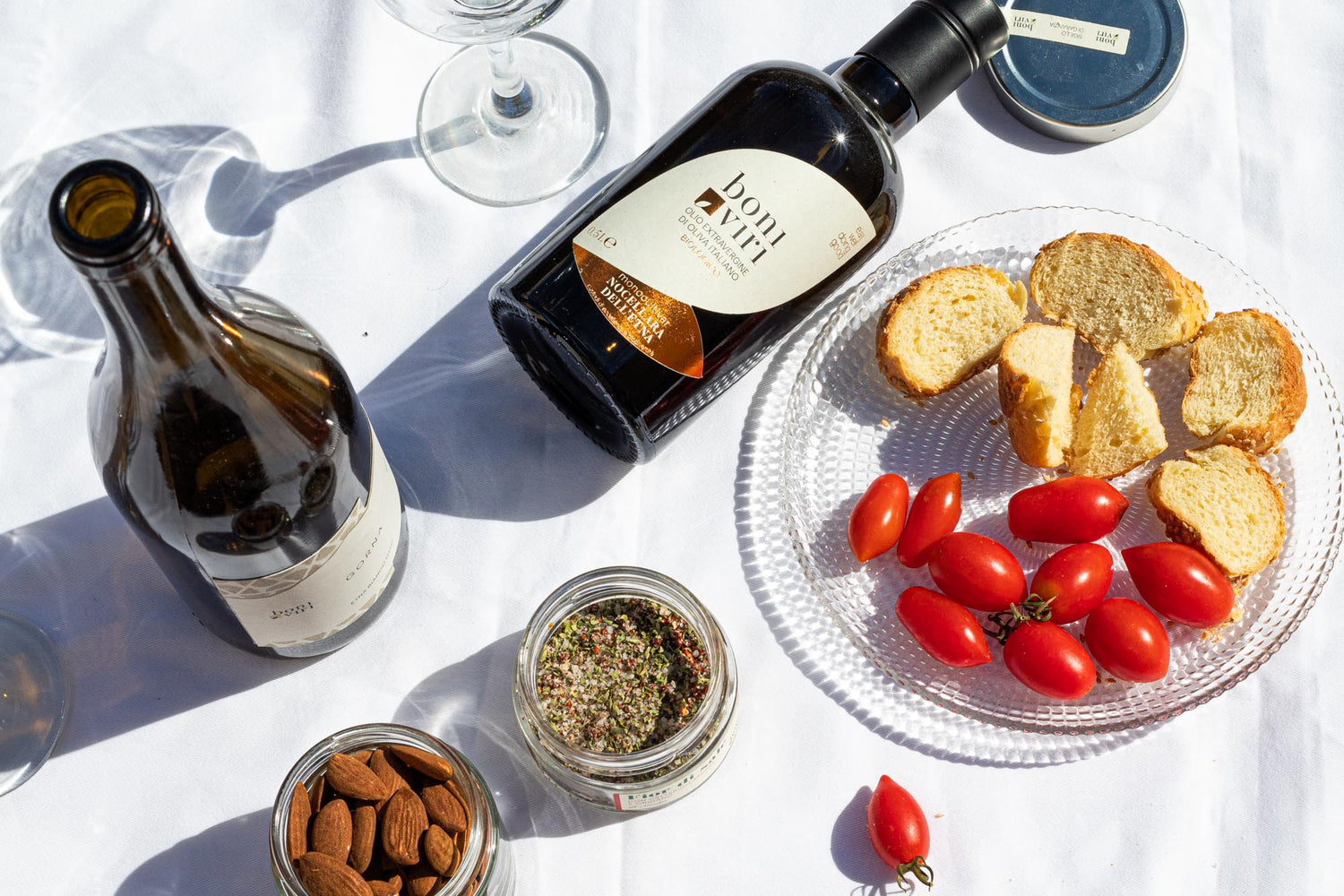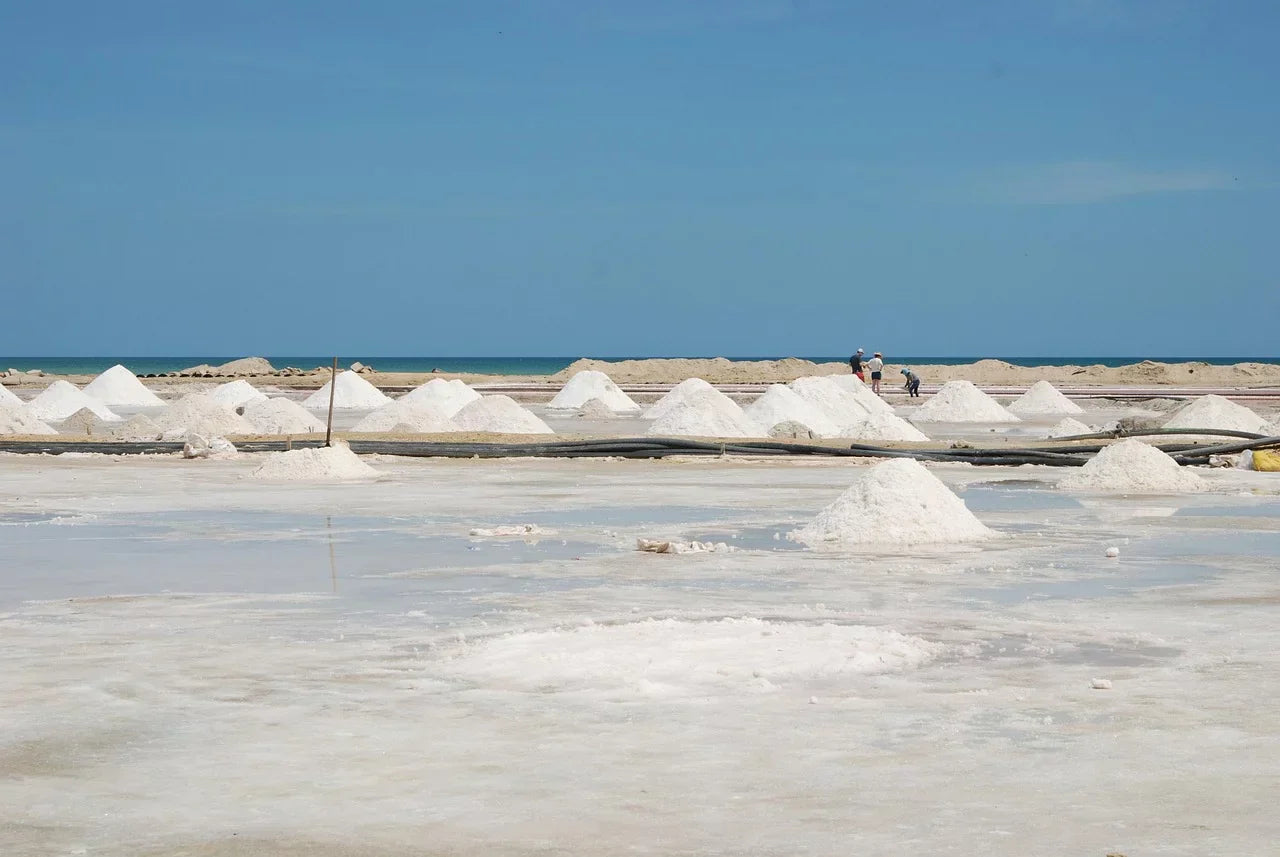May 15, 2025
It is the most important ingredient, present in every home or professional kitchen. We are talking about sea salt and its most valuable type: fleur de sel.
In the salt pan, on hot days, with not excessive humidity and a breeze coming from the sea, we can hope that a thin layer of salt crystals will form on the surface of the water, then carefully collected by hand so as not to break it. This is how we obtain the fleur de sel, the most prized type of sea salt for its nutritional qualities, its unmistakable taste and the traditional low-impact methods adopted in production and harvesting.
Italy has a long tradition in the production of sea salt, and among its regions Sicily stands out for the quantity and quality produced. Sicilian fleur de sel is not only a precious ingredient in the kitchen, it is also a food that has its roots in a thousand-year history linked to the salt mines of Sicily, in particular those of Trapani, Paceco and Marsala. These salt mines represent a unique cultural and naturalistic landscape, shaped by the interaction between human activities and the environment over the course of over two thousand years.
A pinch of history
The salt pans of the province of Trapani are among the oldest and most important in the Mediterranean. Their origin dates back to at least the 5th century BC when the Phoenicians began processing salt along these coasts, taking advantage of their commercial expansion in the Mediterranean and recognizing the strategic and economic value of salt, at the time used mainly to preserve perishable foods.
Over the centuries, the management of the salt pans and the production of salt passed under the control of different civilizations: from the Romans, who also used salt as a form of payment to soldiers (from this custom comes the word "salary"), to the Normans and the Angevins, who made it a state monopoly to ensure control and income. During the Spanish period, the salt pans of Trapani reached their peak production, becoming the largest Mediterranean port for the salt trade in the 17th century. With the world wars and the competition of more industrialized salt pans, production declined. It was only thanks to the commitment of a few local producers and the classification of these areas as natural and protected reserves that this natural and cultural heritage was safeguarded and enhanced, keeping alive the tradition of artisanal harvesting of fleur de sel.
A handcrafted product
The slow and manual methods of harvesting fleur de sel and the total abandonment to climatic phenomena such as wind, temperature and humidity are what make it an artisanal and old-fashioned product. While normal sea salt is produced by decantation (where sodium chloride, or salt, settles on the bottom of the seawater collection tanks), fleur de sel is produced by surfacing. Here's how it works: the seawater is collected in shallow tanks arranged in sequence where evaporation gradually concentrates the salt content. The first tanks are called evaporating, the final ones crystallizing because this is where the salt crystallization occurs. If the right conditions occur, the salt crystals surface, in addition to settling, forming a thin layer that is then collected by the salt workers with special tools, similar to sieves, during the coolest hours of the day. This production method requires great experience and attention, given that fleur de sel is formed only in optimal conditions and for a short period of time. The manual harvesting and careful selection make this salt a unique artisanal product.
Precisely to enhance this uniqueness, Boniviri Fior di Sale was created, enriched with 100% Sicilian ingredients with a completely traceable supply chain, in three versions: dried datterino and oregano, herbs and lemon, orange and lemon. The spices and aromatic herbs we use are grown on Etna, in Trecastagni (CT), by the SARI farm whose story we tell here, and the citrus fruits are dried by us.
Nutrition, taste and sustainability
The fleur de sel is minimally processed, does not undergo refining processes, therefore it maintains its natural composition and purity. In this way, minerals such as magnesium, calcium and potassium, which derive directly from sea water, are not removed during production. It is precisely the presence of minerals that gives the fleur de sel a complex and aromatic flavour, which allows you to use less of it to flavour dishes, contributing to a lower overall consumption. Its taste, more sophisticated and less bitter than traditional sea salt, and its crunchy consistency conquer chefs and lovers of gourmet cuisine. In savoury and sweet dishes (for example, the fleur de sel flavoured with orange and lemon from Sicily Boniviri is an excellent companion for chocolate desserts), the fleur de sel melts slowly in the mouth, enhancing the flavours without covering them.
Choosing Sicilian fleur de sel is also an ecological choice: the production is low impact as it exploits the natural evaporation determined by the temperature, with zero energy use. Furthermore, no industrial machinery or highly polluting processes are used, both because the harvest is traditionally done by hand, and to avoid disturbing the fauna species (such as flamingos) that, together with the local flora, have found their ideal habitat in the salt flats, contributing to the vast biodiversity of this protected ecosystem. Without underground extraction or complex transport, fleur de sel has a carbon footprint that is significantly lower than mined salt.




